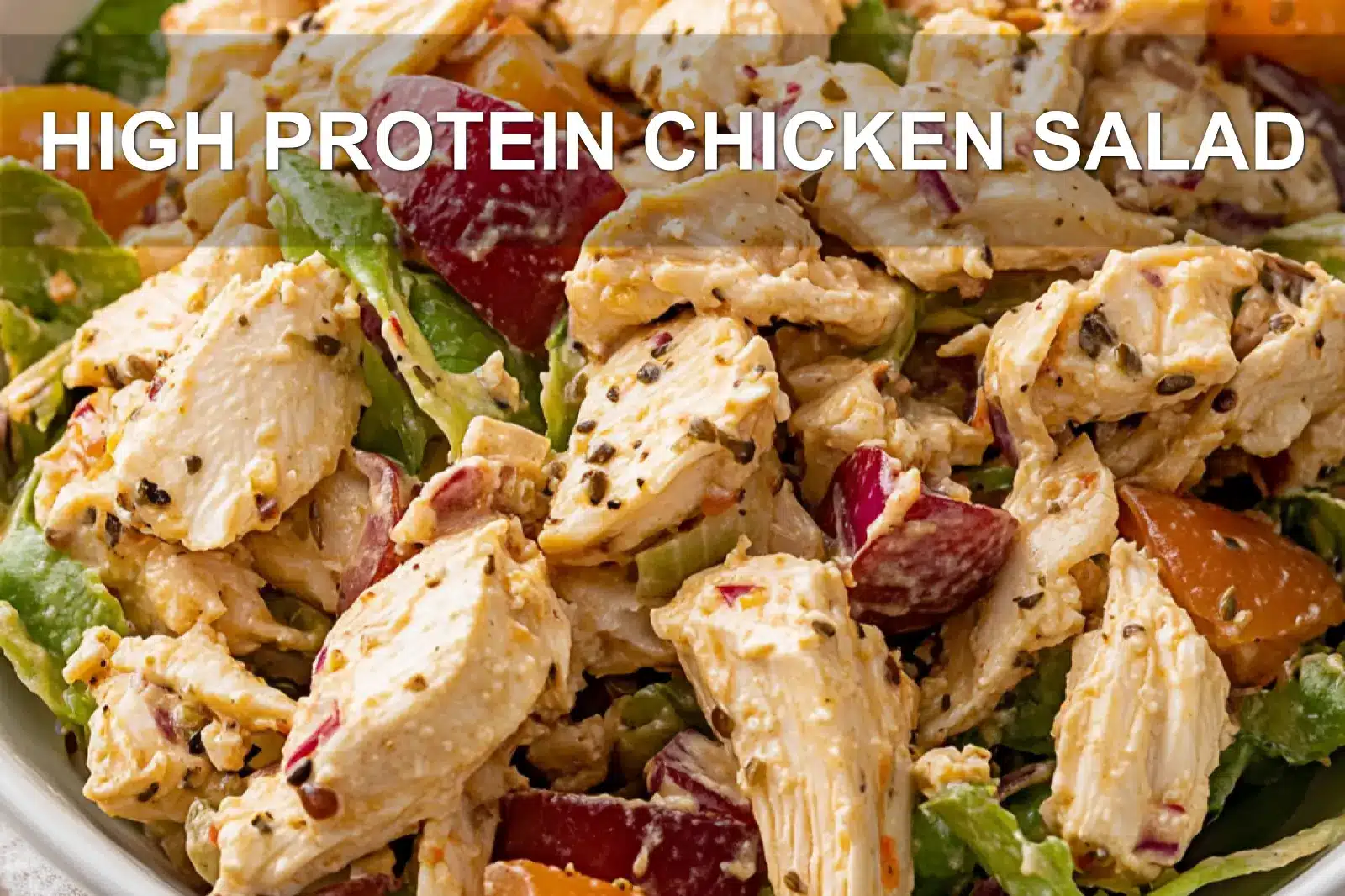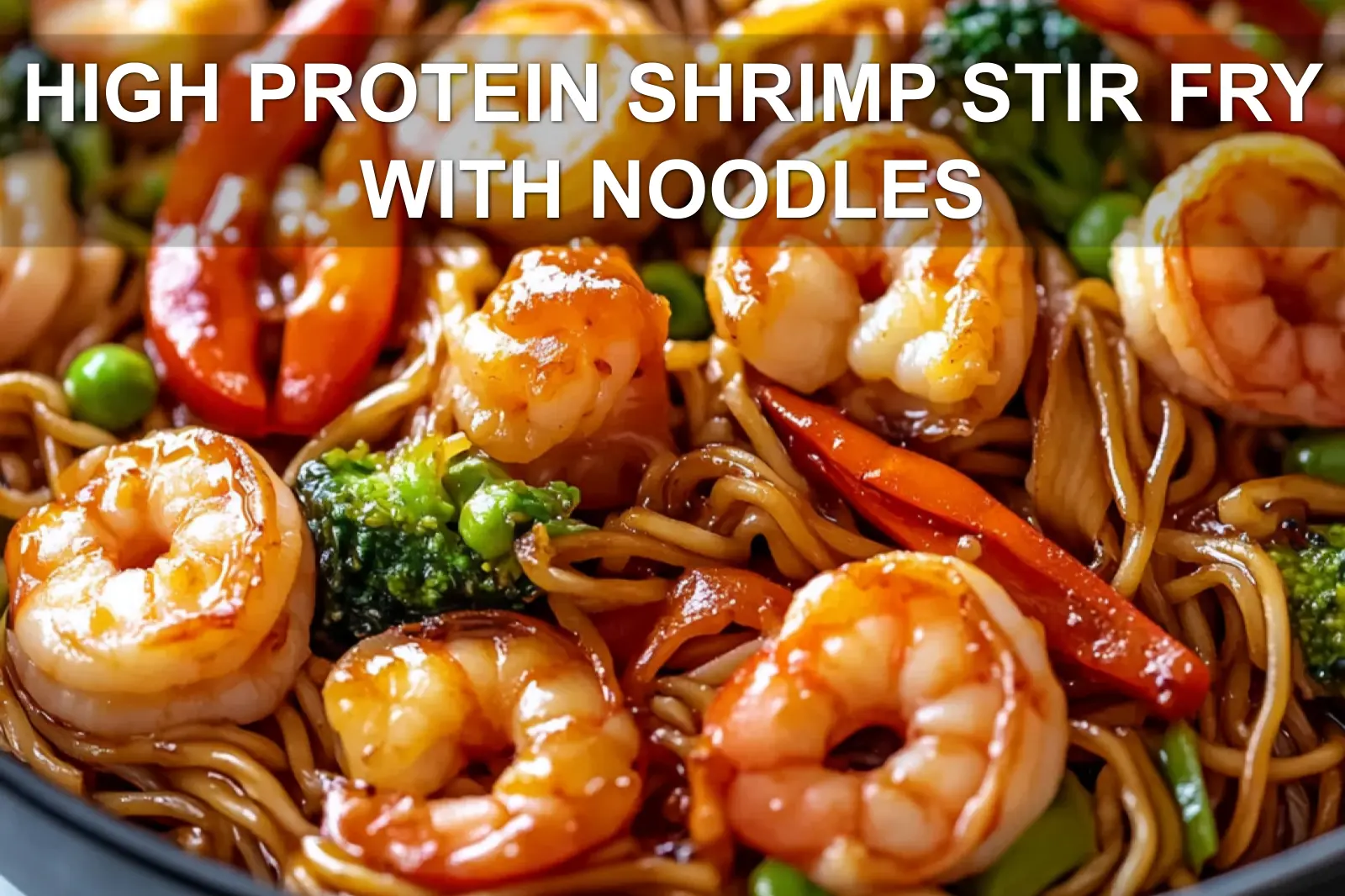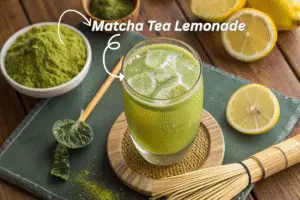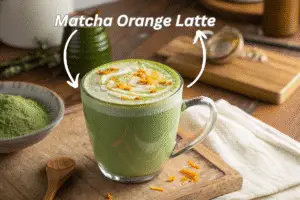Alright, let’s be honest—if you’ve ever held a matcha green tea latte in one hand and your phone in the other (snapping a photo for Instagram, obviously), you already know it’s not just a drink. It’s an experience. That gorgeous green glow, the creamy swirls, the not-too-sweet, earthy taste—it’s like sipping on wellness with a side of aesthetic.
But while matcha has claimed space in our mugs and hearts, have you ever stopped mid-sip and wondered, “Wait… is this even healthy?” or “What’s actually in this stuff?” If you have, you’re in the right place.
In this guide, we’re diving spoon-first into the nutrition of the ever-popular matcha green tea latte. Whether you’re buying it from Starbucks, frothing it up at home, or simply trying to decide if it’s better than your usual cappuccino—this blog’s got your back.
We’ll cover everything from calories to caffeine, health perks (hello, antioxidants!), customization hacks, and even whether this trendy green elixir is a good match for you. And don’t worry—we’re skipping the nutrition lecture and keeping things light, fun, and judgment-free (because hey, sometimes that extra pump of vanilla just hits different).
Let’s spill the tea—literally.
What Exactly Is a Matcha Green Tea Latte?
So, what is a matcha green tea latte, anyway? Is it tea? Is it a latte? Is it some magical unicorn drink that promises glow-ups and Zen?
Technically, it’s all of the above.
Matcha lattes start with matcha powder, which is finely ground green tea leaves. Unlike steeped tea, where you toss the bag after brewing, with matcha you’re drinking the actual leaf. That means more nutrients (and yes, a bit more caffeine). This powder is whisked into water or milk—usually steamed or frothed—to create that creamy, dreamy latte.
Traditional vs. Modern Versions
Traditional matcha? It’s served hot, straight, and strong—like an elegant green espresso. You’ll find it in Japanese tea ceremonies, where every movement is art, and every sip is sacred.
But enter the modern coffee shop version, and suddenly matcha is getting cozy with oat milk, coconut cream, vanilla syrup, and ice cubes. It’s gone full Gen Z, and honestly, we’re here for it.
Whether hot or iced, dairy or plant-based, sweet or unsweetened—it’s still a matcha latte, just with a little extra flair.
What’s Really in That Cup
If you grab a standard matcha latte from a chain café (think Starbucks or Dunkin’), your cup likely includes:
- Matcha green tea powder (usually sweetened)
- Milk (whole, skim, almond, oat, etc.)
- Some kind of sweetener (syrup, sugar, honey)
- Optional flavors (vanilla, lavender, even pumpkin spice—don’t ask)
At home, though? You’re the boss. You can go full organic ceremonial-grade matcha with almond milk and a sprinkle of cinnamon—or, you know, whatever floats your latte.
Coming up next: we’ll break down what all of that actually means nutritionally. Spoiler alert: matcha isn’t magic, but it’s pretty close.
The Nutritional Breakdown
Okay, now for the stuff you maybe didn’t think about when you grabbed that venti iced matcha latte last Tuesday. Let’s peel back the green curtain and look at what’s really going on in terms of calories, nutrients, and caffeine.
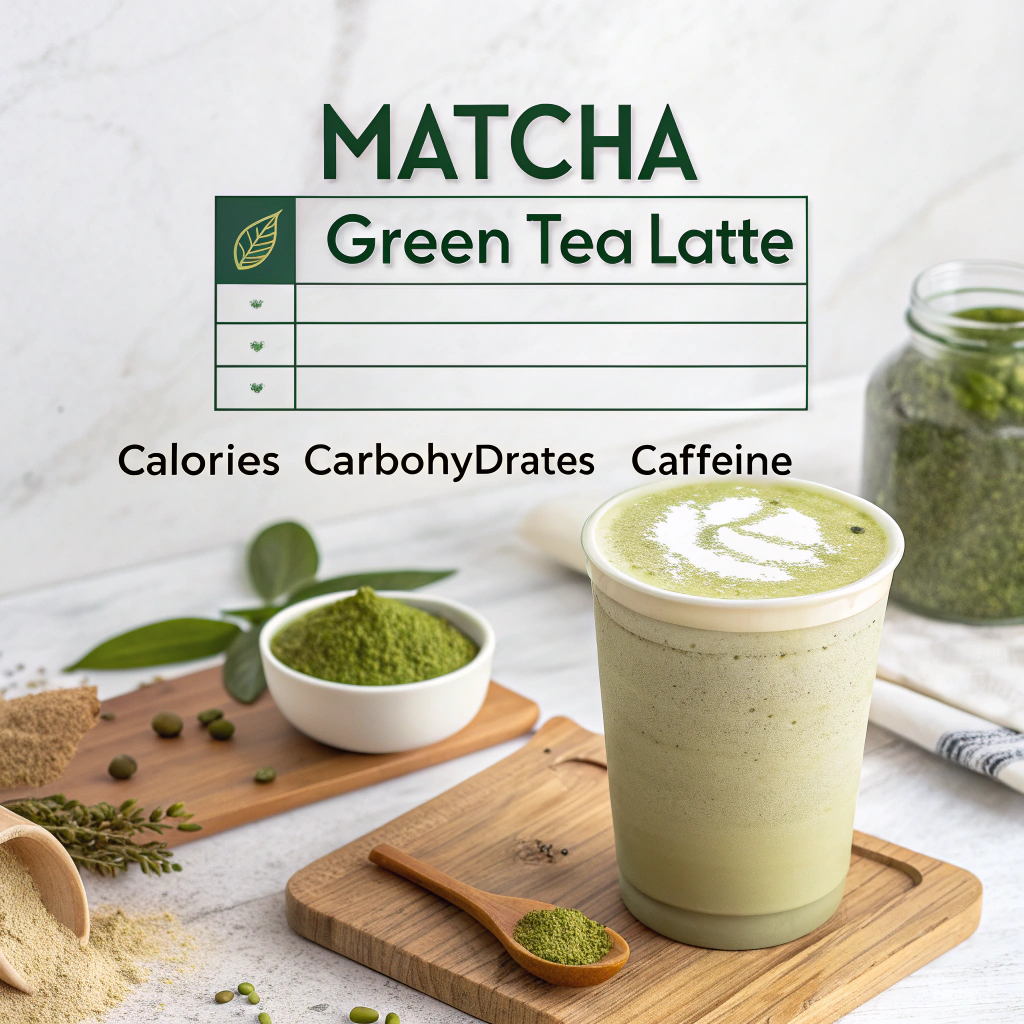
Macronutrients: Calories, Protein, Fat & Carbs
Let’s start with a classic Starbucks 16 oz (grande) iced matcha green tea latte made with 2% milk:
- Calories: ~200–240
- Protein: ~8 grams
- Fat: ~5 grams
- Carbohydrates: ~28–32 grams
- Sugar: ~28 grams
Hold up—28 grams of sugar?! Yep, most commercial matcha mixes include pre-sweetened matcha powder, and then they throw in milk (which naturally has sugars) and sometimes syrups. That’s where the sugar load sneaks in.
Now compare that to a homemade version with unsweetened almond milk and ceremonial matcha:
- Calories: ~40–60
- Protein: ~1–2 grams
- Fat: ~2 grams
- Carbs: ~3–4 grams
- Sugar: 0–2 grams (depending on what you add)
Big difference, right? If you’re watching sugar or calories, going DIY is your golden ticket.
Vitamins & Minerals in Matcha
Let’s geek out (just a little) over the good stuff in matcha powder itself. Even though it’s only used in small amounts, it packs a punch.
Here’s what you’ll find in a typical 1-gram serving (about ½ teaspoon) of pure matcha:
- Vitamin C: Supports immunity and glowing skin
- Vitamin A (as beta-carotene): Good for your eyes and skin
- Iron: Especially important for women (and rare in plant-based drinks!)
- Potassium: Helps balance fluids and keeps muscles happy
- EGCG (Epigallocatechin gallate): A powerful antioxidant
One word: antioxidants. Matcha has a crazy high concentration compared to other green teas. We’re talking 137 times more EGCG than regular steeped green tea. That’s your skin-loving, inflammation-fighting, superhero compound right there.
Caffeine and Antioxidants: Your Energy Mix
Now, about that caffeine buzz. Matcha contains around 70 mg of caffeine per 8 oz cup—depending on how strong you make it.
For comparison:
- Regular coffee (8 oz): ~95 mg
- Black tea: ~40–50 mg
- Green tea (steeped): ~25–35 mg
But here’s the cool part: matcha also has L-theanine, an amino acid that works like caffeine’s chill cousin. It smooths out the jitters and gives you a more calm, focused energy. So you feel alert but not wired—like you’re cruising on a mellow brainwave.
Plus, the combo of antioxidants and caffeine is like your body’s version of a spa day. Energized, refreshed, and ready to slay the to-do list—or at least look productive.
Health Benefits You’ll Actually Enjoy
Alright, here’s the fun part: what’s good about matcha, beyond the fact that it looks amazing in a cute mug? Spoiler alert: there are real, science-backed reasons this green powder has wellness influencers and nutritionists alike swooning.
Focus & Calm: The L‑theanine Effect
Ever sip coffee and feel like your brain is buzzing in five directions? Matcha is kinda like coffee’s Zen cousin.
The magic? It’s called L-theanine, a naturally occurring amino acid in green tea leaves. It boosts alpha brain waves, which are linked to a state of relaxed alertness. So instead of a caffeine spike (and crash), you get a gentle rise in focus and clarity—like slipping into a flow state without trying too hard.
And get this: studies have shown that the combo of caffeine + L-theanine actually improves attention and memory. Perfect for workdays, study sessions, or let’s be real—just remembering where you left your phone.
Antioxidant Powerhouse: Why Matcha’s a Hero
Let’s talk antioxidants—those tiny little defenders that fight off free radicals and reduce oxidative stress in the body. Matcha is LOADED with them.
One specific compound called EGCG (epigallocatechin gallate) is a super antioxidant with potential benefits like:
- Lowering inflammation
- Supporting heart health
- Possibly reducing the risk of chronic diseases
Compared to regular green tea, matcha has WAY more antioxidants. Why? Because you’re consuming the entire leaf, not just steeping and tossing it. That makes matcha more concentrated—and more potent.
Fun fact: 1 gram of matcha contains more antioxidants than a serving of blueberries, spinach, or broccoli. Yup, your latte might be pulling more weight than your salad.
Metabolism Boost—Yes, Really!
Okay, let’s talk about that buzzy word: metabolism.
While matcha won’t magically melt away a weekend’s worth of pizza, it can support your metabolism in some pretty cool ways:
- The caffeine + catechins combo has been linked to increased calorie burning.
- It may help enhance fat oxidation (aka helping your body burn fat more efficiently during workouts).
- It can also help stabilize blood sugar levels, especially if you keep your latte low in added sugars.
The effects aren’t dramatic (we’re not selling miracle drinks here), but consistent matcha sipping might give your health journey a gentle nudge in the right direction.
Matcha Latte Customizations & Their Impact
If you’ve ever stood in line trying to decide between oat milk and almond milk, or whether that extra pump of vanilla is worth it—welcome to the club. Customizing your matcha latte is fun, but it’s also where calories, sugars, and even the health factor can shift big time.
Let’s break down the most popular options and how they play into your overall sip situation.
Dairy vs. Plant Milk: Which Wins?
Here’s the deal: milk matters. A lot.
Dairy Milk (2% or whole):
- Creamy, classic, and high in protein (8g per cup)
- Contains natural sugars (lactose), which can add up
- Higher in calories—especially whole milk
- Rich in calcium and vitamin D
Almond Milk (unsweetened):
- Super low-calorie (~30–40 per cup)
- Low in protein (1g), but low in sugar too
- Often fortified with calcium and vitamin E
- Very light flavor (some say watery)
Oat Milk:
- Creamy like dairy (and super trendy right now)
- Moderate calories (~100–120 per cup)
- More carbs and natural sugars
- Minimal protein, but satisfying texture
Coconut Milk (carton-style):
- Mild, slightly sweet, tropical taste
- Low-ish calories, low protein
- Adds a rich mouthfeel without heaviness
🏆 Winner? It depends on your goals! If you’re watching calories, unsweetened almond is your BFF. For taste and creaminess, oat milk is a star. If you’re after protein and nutrients, dairy might be your match.
Sweeteners & Flavor Add‑ins: Friend or Foe?
This is where your innocent latte can sneakily become a dessert in a cup.
Sugar or simple syrup:
- 1 pump = ~5 grams of sugar
- Starbucks matcha is pre-sweetened, so adding more sugar is overkill (unless your sweet tooth insists)
Honey or agave:
- Natural, sure—but still sugar
- Adds flavor depth, but calories too (1 tbsp = ~60 calories)
Vanilla, lavender, or seasonal syrups:
- Delicious and dreamy
- Usually pack 20–30 calories per pump, depending on the brand
Spices like cinnamon or turmeric:
- ZERO calories
- Add a warm, wellness vibe (and antioxidant perks)
Pro tip: Want that fancy flavor without all the sugar? Ask for half-sweet or try a dash of pure vanilla extract. Your taste buds (and blood sugar) will thank you.
Matcha Latte Compared: Homemade vs. Coffee Shop
There’s nothing quite like the satisfaction of sipping a matcha latte that someone else made—especially when you’re clutching it on your way to a Monday morning meeting. But is it the healthiest way to enjoy matcha? Let’s compare your at-home brew to the café go-to.
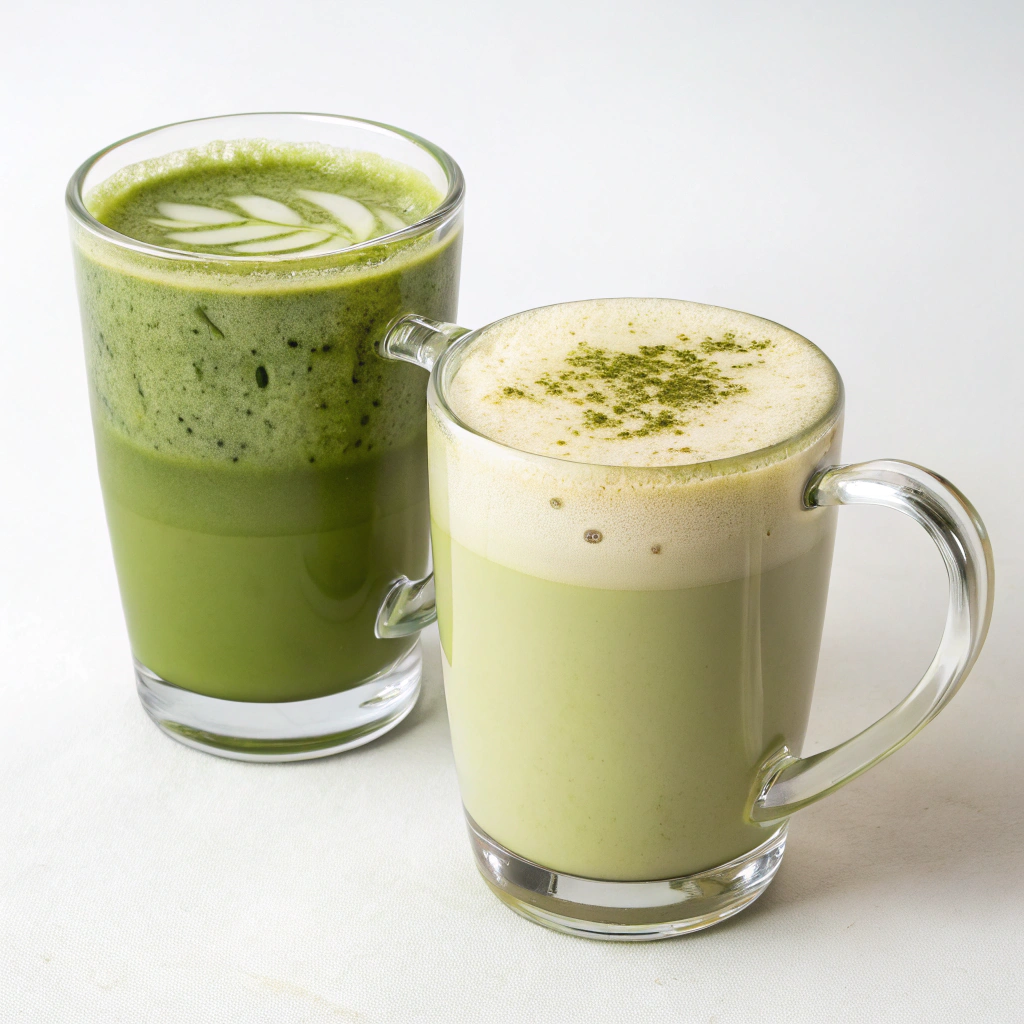
Typical Starbucks (or Other Chain) Stats
Let’s take a grande iced matcha latte from Starbucks as our example—it’s kind of the gold standard for coffee shop matcha in the U.S.:
- Calories: 200–240
- Sugar: 28g (yep, that’s about 7 teaspoons!)
- Fat: ~5g
- Caffeine: ~80 mg
- Protein: ~8g (thanks to the 2% milk)
What’s the catch? Starbucks uses a pre-sweetened matcha blend, which already has sugar before they even add your milk. So unless you ask for customizations, you’re probably getting more sweetness than you bargained for.
Also, the caffeine content is higher than homemade matcha due to the amount of powder they use—great for energy, not so great if you’re caffeine-sensitive.
Oh, and let’s not forget: add-ins like vanilla syrup, whipped cream, or fancy foam all add up fast in calories and sugar.
Homemade Perks: You Control It All
Now let’s talk homemade matcha. You can tailor this drink to fit whatever mood, dietary goal, or vibe you’re going for. Want low sugar? Done. Extra creamy? Easy. Vegan? No prob.
Here’s what a basic at-home matcha latte might look like (using 1 tsp matcha and 1 cup unsweetened almond milk):
- Calories: 40–60
- Sugar: 0–2g (depends on add-ins)
- Fat: ~2g
- Caffeine: ~70 mg
- Protein: 1–2g
Plus, you get to choose your matcha quality (ceremonial vs. culinary grade), your milk, your sweetener (or not), and even sneak in fun extras like cinnamon, collagen powder, or frothy oat milk art (if you’re feeling fancy).
And yes, it might require a whisk and two minutes of your time—but your body might just thank you later.
Who Should Sip (and Who Should Skip)
Consider Your Caffeine Sensitivity
Matcha isn’t just innocent green tea—it carries a decent caffeine punch. If you’re the type who feels jittery after half a cup of coffee, start slow. Try ½ tsp of matcha powder and see how your body reacts.
When Antioxidants Aren’t Enough – Contraindications
If you’re:
- Pregnant or breastfeeding (talk to your doc),
- Taking blood thinners,
- Sensitive to caffeine,
…you’ll want to be cautious or ask your healthcare provider before sipping daily.
Also, matcha contains oxalates, which in large amounts can contribute to kidney stones. No need to panic—just don’t down five matcha lattes a day and you’re good.
Matcha on the Go: Tips & Hacks for Busy Lives
Best Ways to Prep or Store Matcha Powder
- Keep your matcha airtight, dry, and away from light—think of it like a diva that hates heat and humidity.
- Use a bamboo whisk (chasen) or electric frother for best results.
- If you’re lazy (no judgment), a shaker bottle with ice works surprisingly well in a pinch.
Cool Tools & Gadgets for Easy Mixing
- Milk frothers = creamy foam heaven
- Mini electric whisks = fast and fuss-free
- Travel-friendly matcha sticks = your matcha, anywhere
Eco-Friendly & Ethical Notes
Choosing Quality, Traceable Matcha
Look for:
- “Ceremonial grade” for drinking (not baking)
- “Shade-grown” and “stone-ground” labels
- Brands that specify origin (Uji, Nishio = top tier)
Sustainable Brands Worth Sipping
Some favorites among eco-conscious drinkers:
- MatchaBar
- Ippodo
- Encha
- Jade Leaf
Bonus points if they’re organic, plastic-free, and ship in recyclable packaging!
Real Talk: Why Matcha Works (And What the Experts Say)
Updated Paragraph with Link Placeholders:
I started drinking matcha about three years ago during a caffeine crash phase where coffee made me jittery, moody, and totally unable to nap (and I love naps). I swapped my afternoon latte for a homemade matcha and, to my surprise, felt alert but calm—no shaky hands, no crash. Since then, I’ve experimented with brands, recipes, and even took a short tea workshop (because yes, I’m that person).
From personal experience, I’ve learned that the quality of the matcha makes a huge difference—ceremonial grade is smoother, less bitter, and far more enjoyable. My favorite combo? 1 tsp organic ceremonial matcha, ½ cup steamed oat milk, and a splash of maple syrup. Total mood booster!
One reader, Ashley from Portland, shared:
“I never thought I could give up coffee until I tried matcha. Your guide helped me figure out how to make it taste good at home. I actually look forward to my mornings now—thanks!”
For a deeper dive into the proven health benefits of green tea, check out this Harvard report on tea and its role in wellness. And if you’re curious about caffeine and natural energy boosters, the National Center for Complementary and Integrative Health has an excellent breakdown.
FAQ : Matcha Green Tea Latte Nutrition
Is matcha healthier than coffee?
In many ways, yes! It’s got more antioxidants, a steadier caffeine hit, and L-theanine for calm energy. But if you need that bold flavor, coffee’s still your ride-or-die.
Will matcha make me jittery?
Unlikely! The L-theanine balances the caffeine buzz, so you’ll feel more focused than frazzled.
How much sugar is too much in a latte?
Aim for under 10g per cup if you’re having it daily. More than 20g, and you’re in dessert territory.
Can kids drink matcha?
In small amounts, yes! But keep it low caffeine and skip the sweeteners. Talk to their doc if unsure.
Best time of day for matcha?
Morning or early afternoon. Drinking it late might mess with your sleep (unless you’re a night owl on purpose).
How to judge quality matcha powder?
Bright green = good
Dull yellowish-green = meh
Smooth, not bitter flavor
Stored cold and sealed tight
Wrap‑Up: Should You Make It Your Daily Drink?
Quick Pros & Cons Checklist

Pros:
- Packed with antioxidants
- Gentle caffeine + L-theanine = smooth focus
- Customizable and delicious
- Instagrammable (hey, it counts!)
Cons:
- Some store-bought versions are sugar bombs
- Caffeine-sensitive folks should sip with caution
- Good quality matcha = $$$
Final Thoughts (+ Mini Matcha Latte Recipe)
If you’re looking for a drink that tastes like self-care and comes with bonus nutrients, matcha lattes are a yes. Just remember: you control the sugar, the milk, and the vibes.
Here’s a mini recipe to try at home:
Quick Homemade Matcha Latte
- 1 tsp ceremonial matcha
- 2 oz hot (but not boiling) water
- ¾ cup milk of your choice (steamed or cold)
- Optional: 1 tsp honey or maple syrup
- Whisk matcha + water until smooth, add milk, froth, and enjoy!

